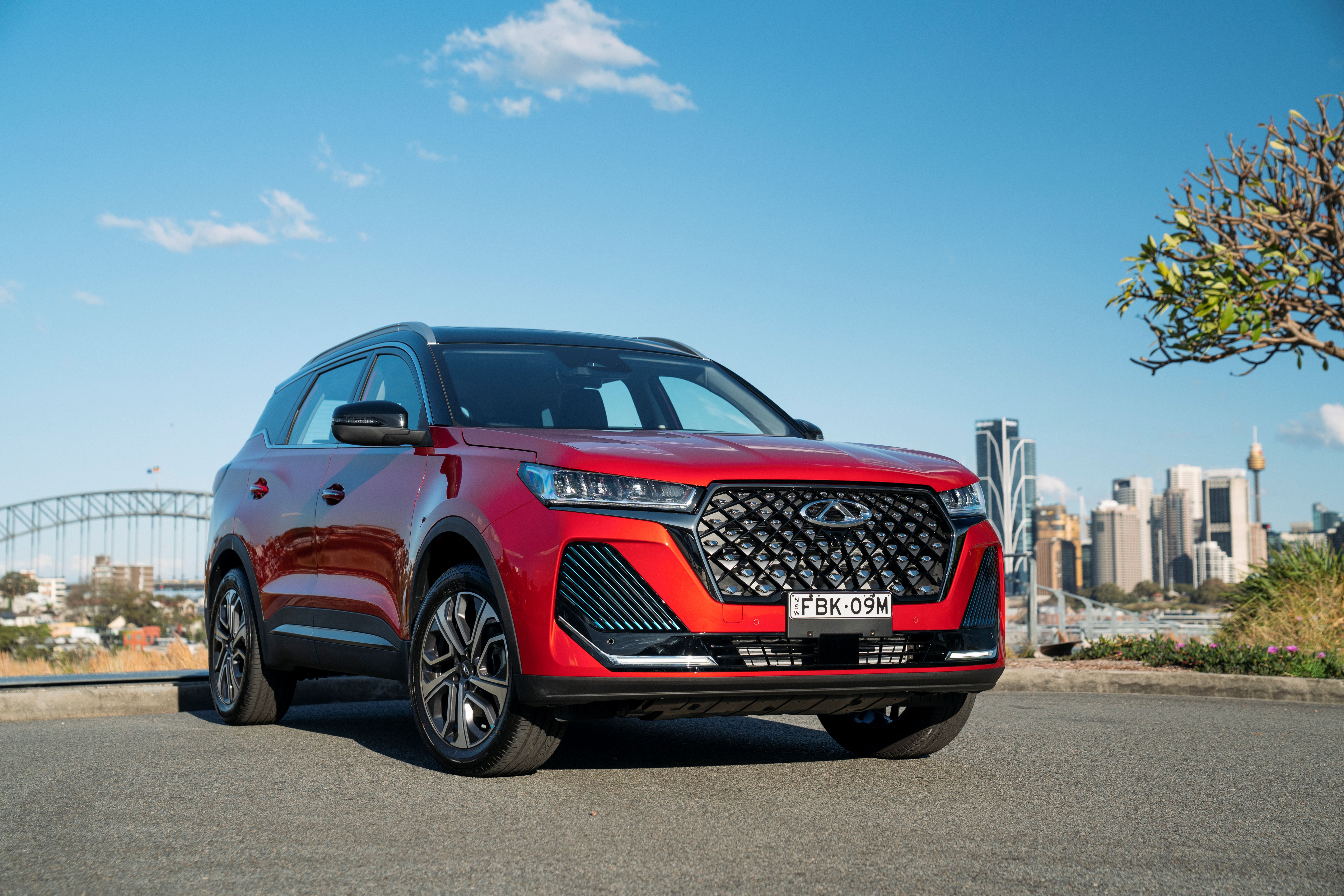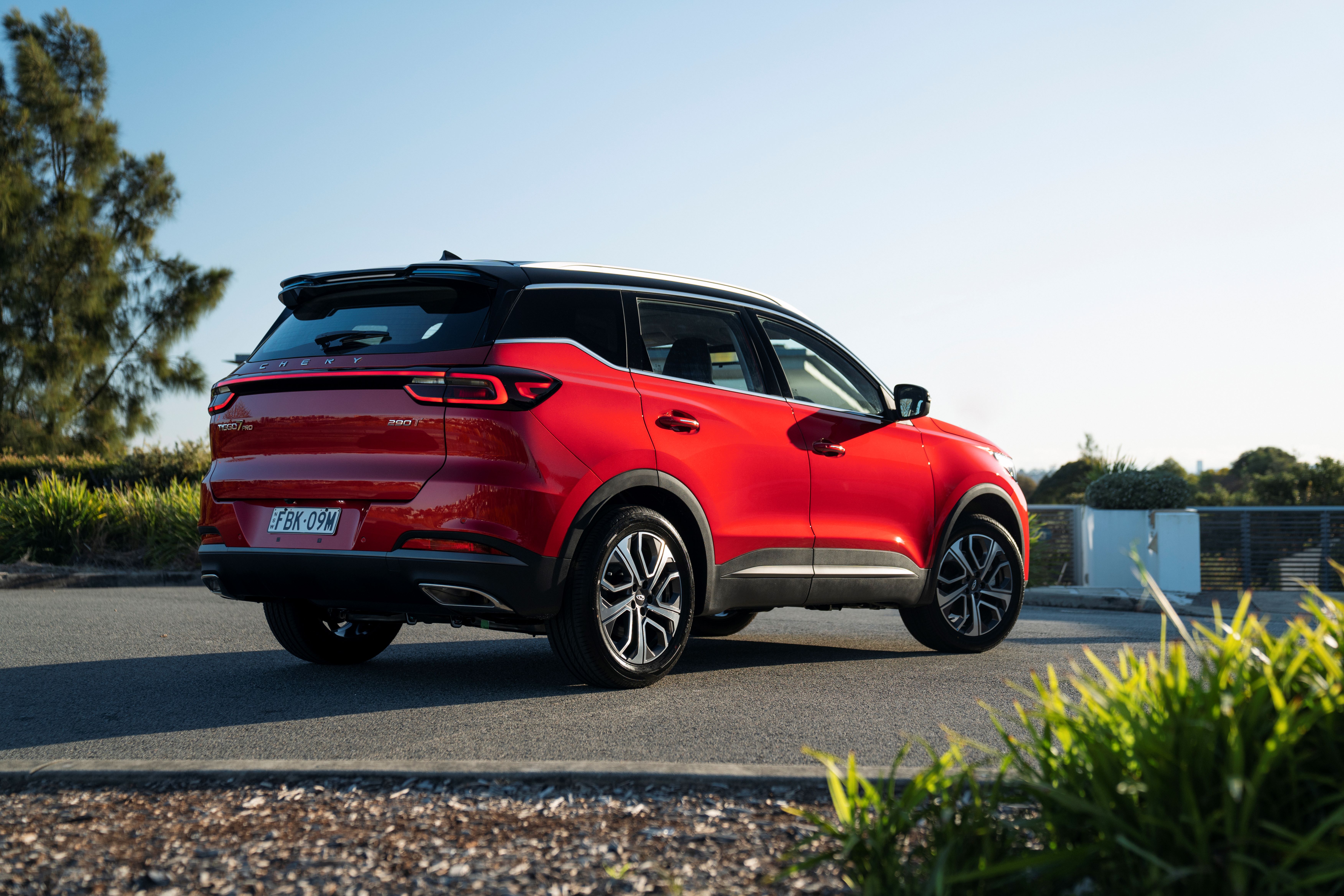Chris Riley tests the 2024 Chery Tiggo 7 Pro medium SUV with pricing, specs, ride and handling, safety, verdict and everything the over-50 driver needs to know.
Summary: We had some reservations and criticisms, but the bottom line is that the Tiggo 7 Pro is a lot of car for the money. Chery will sell as many as they can bring in.
2024 Chery Tiggo 7 medium SUV
Price: $36,990-45,990 (driveaway)
Warranty: Seven-years, unlimited km
Safety: five ANCAP stars (2023)
Build location: China
Engine: 1.6-litre turbocharged four-cylinder petrol
Power: 137kW @ 5500rpm
Torque: 275Nm @ 2000rpm
Transmission: seven-speed dual clutch automatic, front-wheel drive (Urban, Elite), four-wheel drive (Ultimate)
Body: 4513mm (long); 1862mm (wide); 1696mm (high)
Kerb weight: 1512kg
Ground clearance: 175mm
Braked towing capacity: not rated for towing in Australia
Boot capacity: 626 litres (1672 litres with seats folded)
Wheels: 18-inch alloy (FWD), 19-inch alloy (4WD)
Tyres: 225/55 R18 (FWD), 225/55 R19 (4WD)
Spare wheel: full size alloy
Turning circle: not stated
Fuel tank: 41 Litres (FWD), 57 litres (4WD)
Official consumption: 7.0L/100km (FWD), 7.8L/100km (4WD) (95 RON unleaded fuel)
Consumption on test: 8.8L/100km (see text)
seniordriver consumption on test: 7.9L/100km (319km)
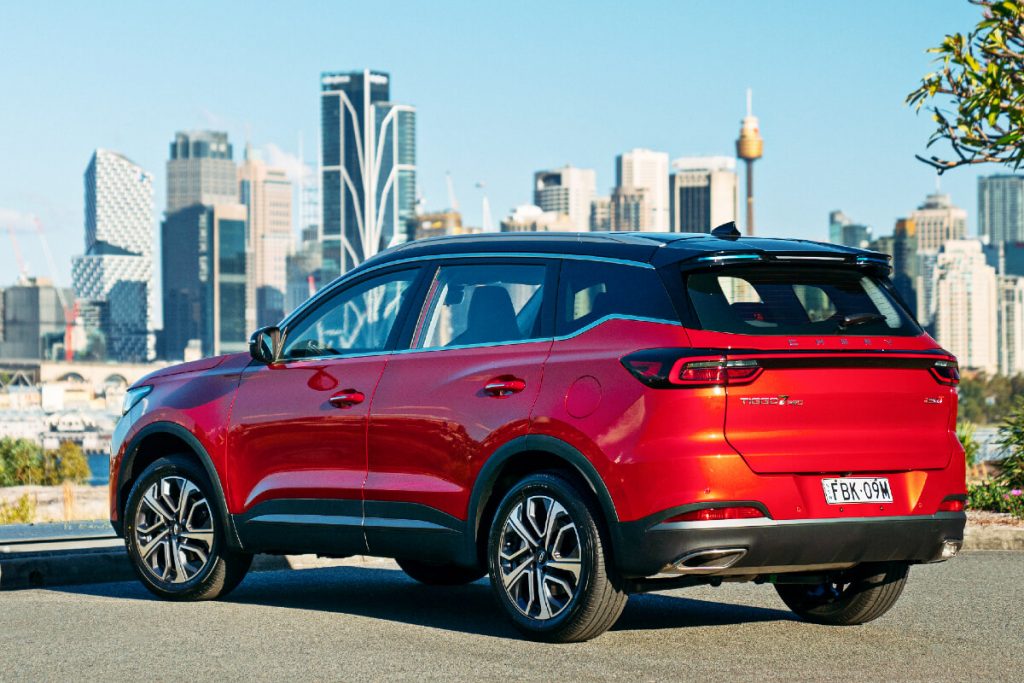
[review]
It’s becoming increasingly difficult to tell small(ish) SUVs apart, with a plethora of new brands and names.
The Tiggo 7 Pro is a five-seater from a name that may ring a bell with some readers, a Chinese brand called Chery.
A couple of Chery hatches and a small SUV were offered here about 10 years ago, but withdrawn from sale after the introduction of tougher safety regulations.
While those vehicles were imported independently, newcomers the Omoda 5, Tiggo 7 and Tiggo 8 Pro are all factory backed offerings.
They’re better-engineered, up-to-date vehicles with five-star safety ratings and a 7-year warranty.
The message is clear – China’s largest and most successful car manufacturer is here and ready to rumble.
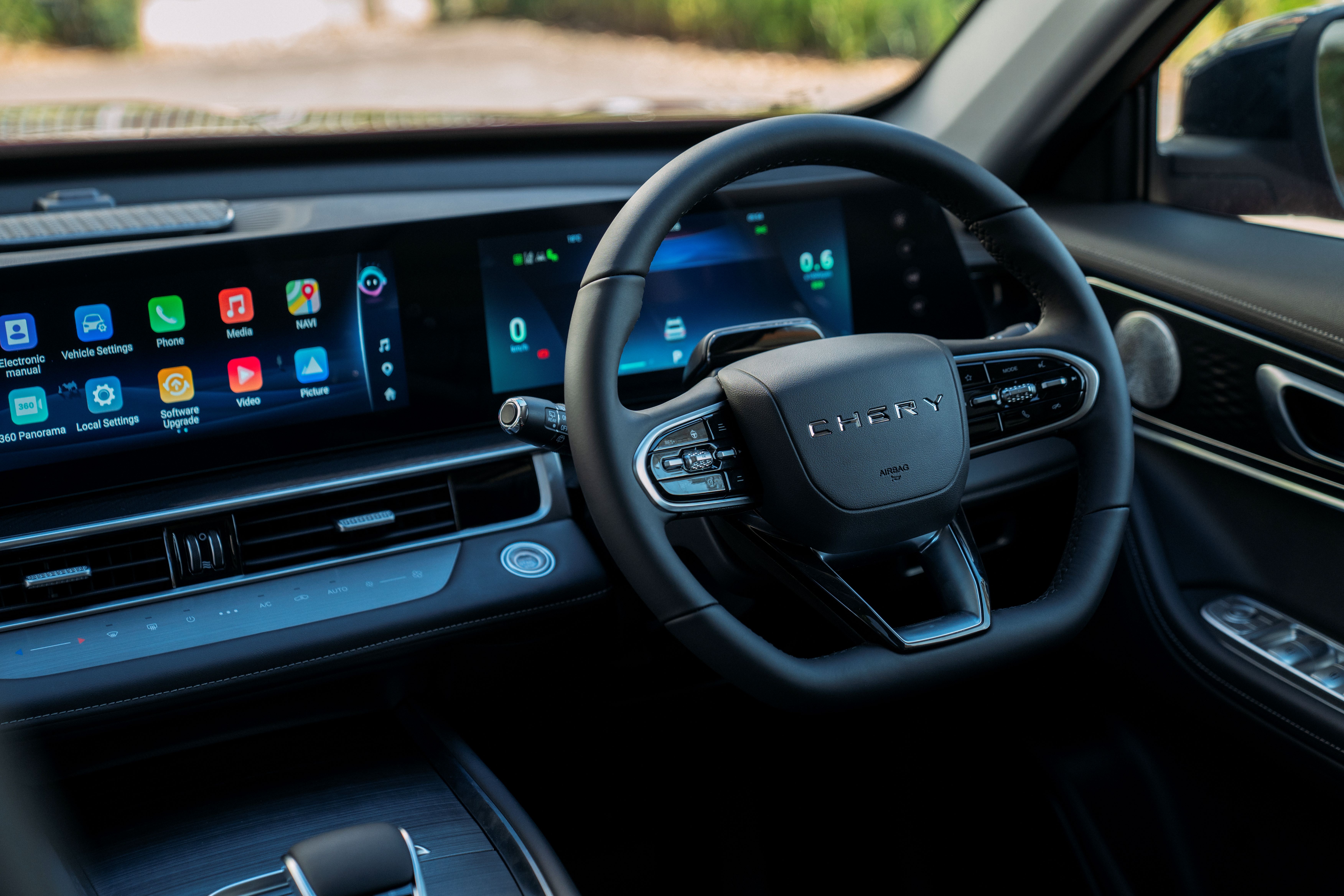
What’s it cost?
The look is smart and contemporary, well-proportioned with raked lines and unlikely to scare off any would-be buyers.
Like other Chinese SUVs, the Chery Tiggo 7 Pro offers plenty of bang for your buck in terms of equipment and safety features.
The five-seat Tiggo 7 Pro comes in three grades: Urban ($36,990), Elite, ($41,990) and Ultimate, ($45,990) – all prices are driveaway.
Urban and Elite are two-wheel drive, Ultimate is all-wheel drive.
Standard kit includes artificial leather trim, dual zone climate control with rear air vents, heated power adjust driver and front passenger seats, plus ambient interior lighting and a panoramic sunroof.
You also get 18-inch alloys, adaptive cruise control, auto high beam, traffic sign recognition, keyless entry and start, auto lights and wipers, LED head, tail and daytime running lights, plus front and rear parking sensors.
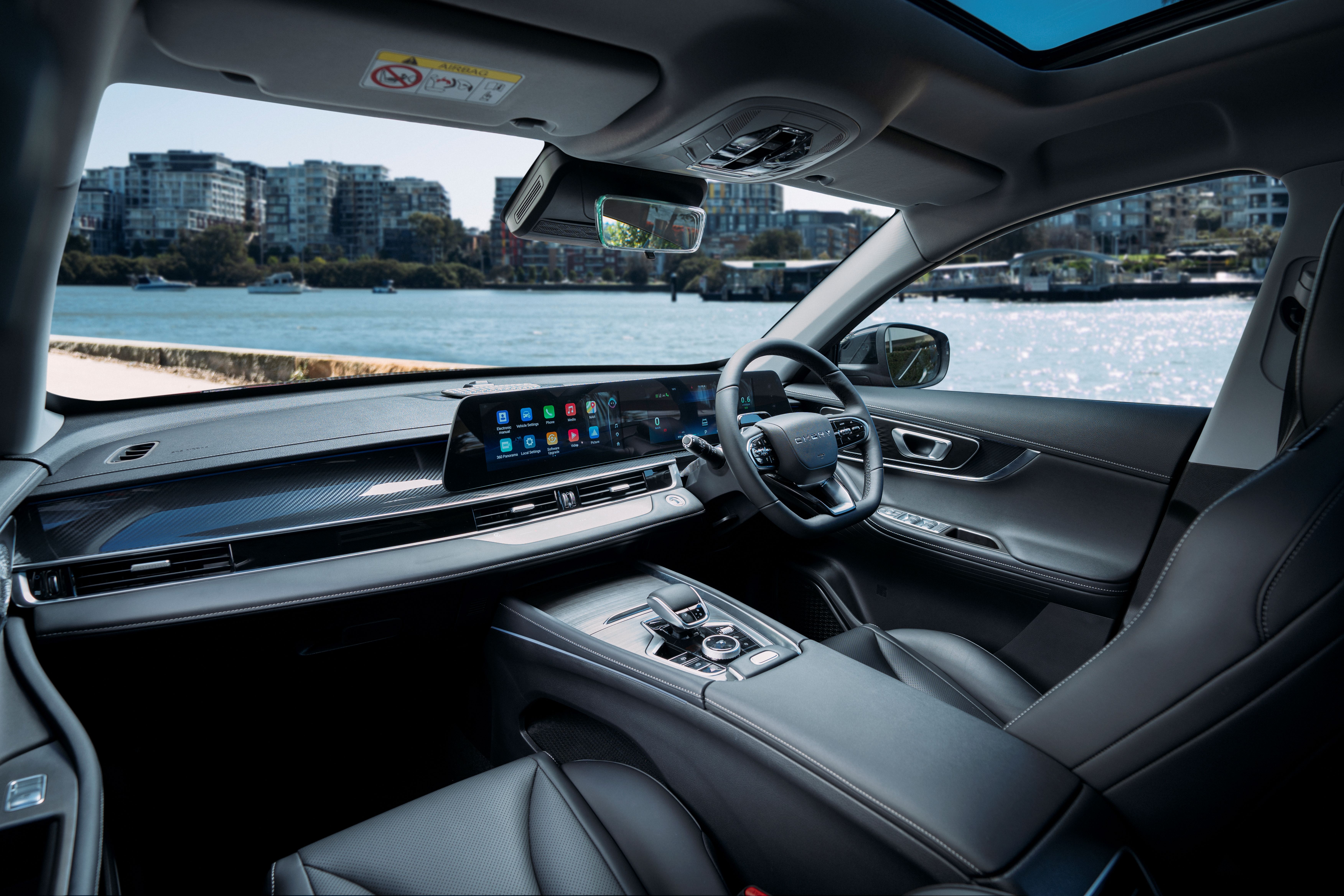
Elite expands the list with a 360-degree camera, auto-folding mirrors, powered tailgate, air quality management system and negative ion air freshener.
Ultimate adds all-wheel drive, larger 19-inch alloys, red front brake calipers, memory for mirrors and driver seat, auto-dimming rear-view mirror and ventilated front seats.
Some features go undocumented, such as walk-away lock/unlock, a chilled console box and an easy-access auto slide driver seat.
Tyre pressure monitoring and a full-size spare are provided.
Infotainment across the board consists of a 12.3-inch touchscreen, Bluetooth, AM/FM radio, wireless Apple CarPlay and Android Auto, and eight-speaker Sony audio.
Although it misses out on DAB+ digital radio, it does get built-in satellite navigation, unlike many Chinese competitors.
A second 12.3-inch screen houses the instrument cluster which can be configured in different ways.
There’s also a wireless charge pad for phones.
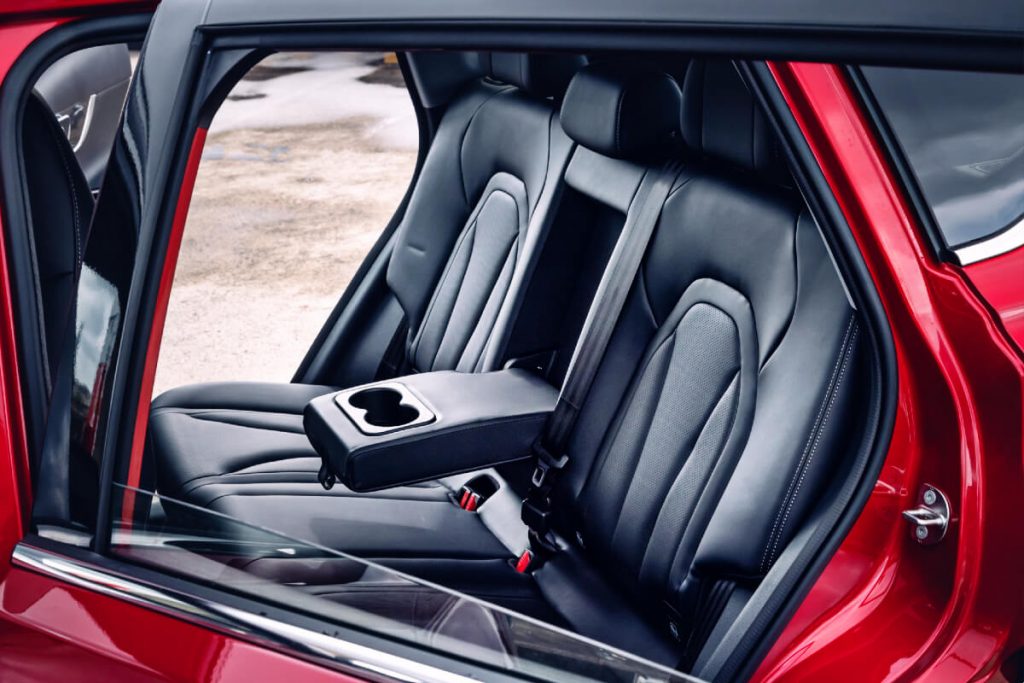
“Hello Chery” voice-control allows drivers to operate key functions, such as making phone calls or changing the music, without having to take their hands off the wheel.
USB-A and C ports are located in the front, with another USB-A port in the back, plus 12-volt outlets in the front and load area.
Tiggo gets five stars for safety with eight airbags, including a driver knee airbag.
A centre airbag which provides added protection to front seat occupants in side impact crashes is also standard.
Autonomous emergency braking (Car-to-Car, Vulnerable Road User, Junction & Crossing, Backover and Head-On) as well as a lane support system with lane keep assist (LKA), lane departure warning (LDW) and emergency lane keeping (ELK), and an advanced speed assistance system (SAS) are standard on all variants.
You even get a visual warning if a car or cyclist is approaching when you go to open one of the rear doors.
The only thing really missing is head-up display which projects important information onto the lower part of the windscreen, and means you don’t have to take your eyes off the road.
Isofix child seat mounts are provided for the outer two rear seats, plus three top tethers.
Tiggo is covered by a 7-year, unlimited-kilometre warranty, 7-year roadside assistance and 7-year capped-price servicing.
Service is due every 12 months or 15,000km.
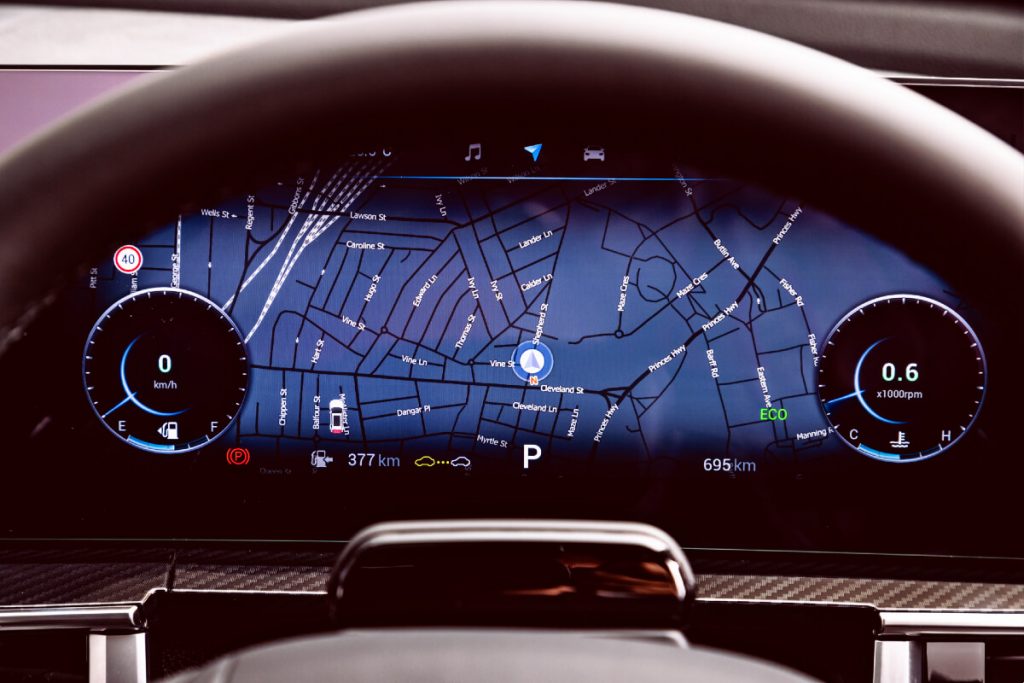
What’s it go like?
Tiggo 7 Pro feels about the same size as the RAV4, at least inside.
It measures 4513mm in length, 1862mm in width and 1696mm in height, with a 2670mm wheelbase.
In terms of size, it sits between the Omoda 5 and the Tiggo 8 Pro which has only just been launched here.
Not sure what the numbers are supposed to signify.
The five-seater has plenty of rear legroom, with air vents and a fold-down armrest for rear seat passengers.
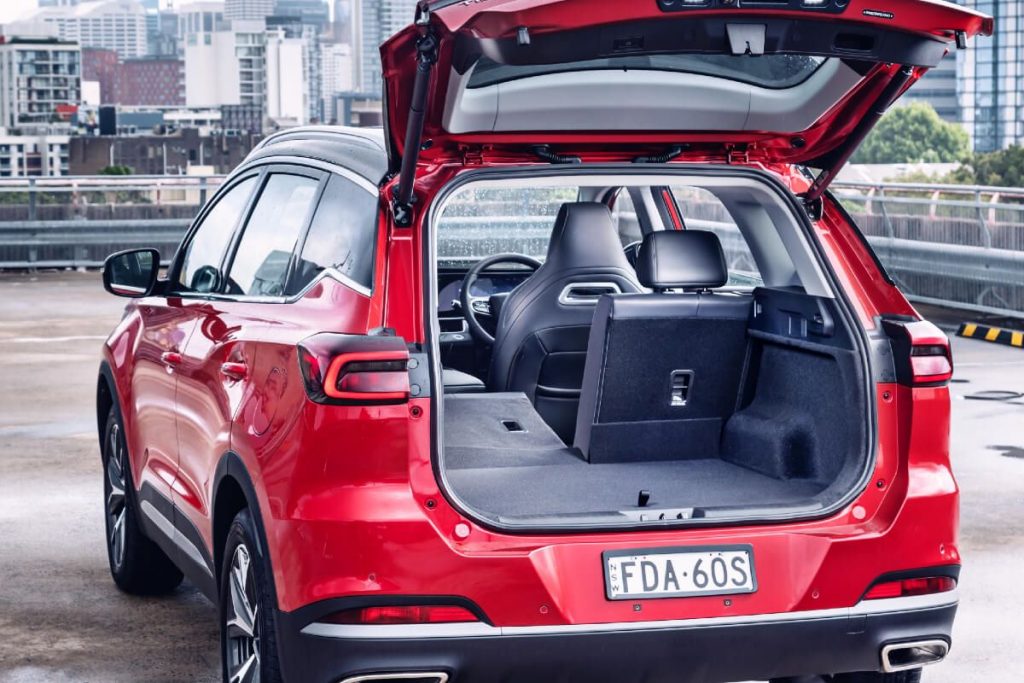
A generous load area and power-operated tailgate are sure to be welcome, with an impressive 626 litres of luggage space or 1672 with the rear seats folded.
The artificial leather looks and feels good and those in the front benefit from heated and cooled seats.
Cooling is a bonus with our scorching Australian summers, but dig deeper because only the seat base is ventilated.
The seat back is where you want it.
The digital dashboard with its two 12.3-inch screens looks slick and impressive.
But we found the default pastel colours a little washed out and difficult to see in strong sunlight.
Ditto the row of aircon buttons that sit below the screen which can also be difficult to make out.
Good to see a physical volume control too, although it is easy to inadvertently switch off the system if you hit a bump or apply too much pressure to the roller style control.
Working out which steering wheel toggles and buttons do what is less than intuitive.
The touchscreen also takes a bit to work out and can be slow to respond.
Trial and error works best, but all the while you’re warned to keep your eyes on the road.
To our ears the Sony audio system sounds bassy and undefined, and left us wondering whether it consists of anything more than the Sony-badged speakers.
Power comes from a 1.6-litre turbocharged four-cylinder engine that puts out 137kW of power at 5500 rpm and 275Nm of torque at 2000 rpm.
It’s paired with a seven-speed dual-clutch automatic transmission, and is available in two- or all-wheel drive form.
The torque on demand system transmits drive to all four wheels, although it operates in front-wheel drive the majority of the time.
You get six drive modes: Eco, Sport, Normal, Snow, Mud and Off-road.
They are engaged using a large rotary control located in the centre console.
The dash from 0-100km/h takes 9.9 seconds.
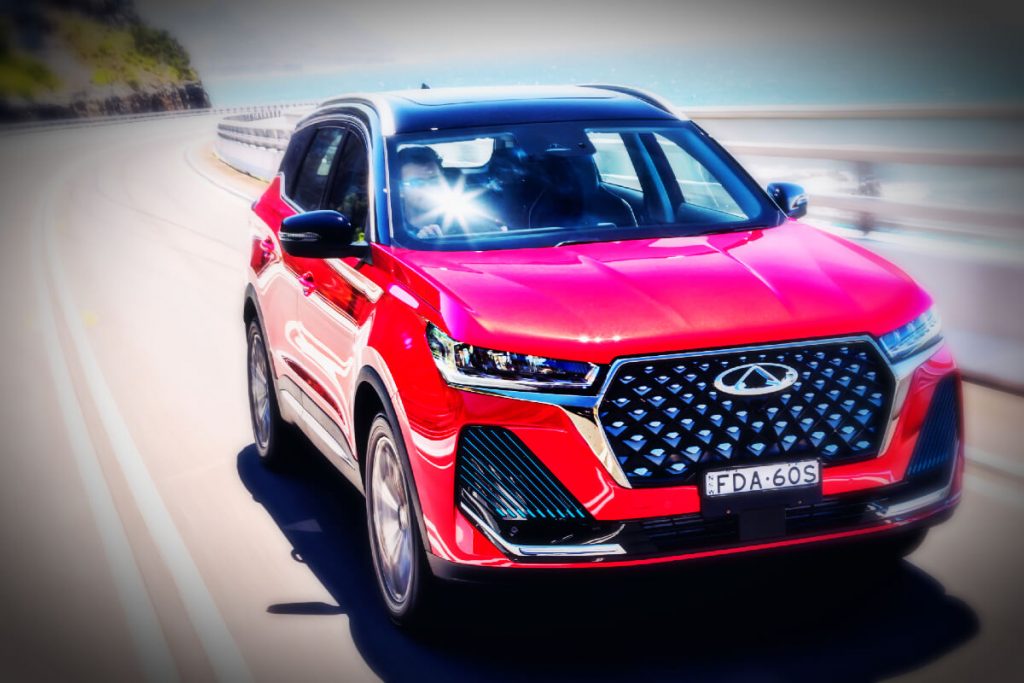
Fuel consumption, meanwhile, is a claimed 7.0L/100km, rising to 7.8L with the all-wheel drive variant.
Ultimate gets a slightly larger 57-litre fuel tank, in recognition of its heavier fuel consumption.
CO2 emissions are between 163 and 181g/km on the combined cycle.
The turbocharged four offers plenty of poke, with torque available nice and early.
But promising dynamics are spoiled by turbo lag, together with a touchy accelerator, an indecisive, slow-to-respond auto and over-sprung suspension.
By the time the twin-clutch tranny works out what is required, the moment has passed.
You’re already backing off – and that we might add is in sport mode.
Sadly, gear change paddles are absent (conspicuously).
You can take control and change gears yourself using the stubby transmission selector, cum hand rest – but doing so is clumsy.
Then there’s the bouncy, roly-poly ride.
The suspension is too firm at times and too soft at others.
While it is not apparent on smooth well-formed roads, back roads see the wagon crash through potholes.
Bumps and undulations are likely to set off a series of bouncing, up and down movements – even low speeds.
At higher speeds the handling becomes disconcerting.
At the same time the electronics did a good job of preventing the rear wheels from braking traction, even on wet roads.
False alarms from the auto braking and lane centre assistance can be irritating at times, but this trait is not confined to the brand.
These shortcomings are not a deal-breaker, not if you’re just planning to haul the kids around town, but it shows a lack of refinement and commitment.
The thing is these issues could easily be addressed with a bit of fine tuning and the help of a ride and handling expert.
We’re guessing there’s plenty of former Ford and Holden engineers available who would jump at the chance.
Tiggo takes premium 95 unleaded. We finished on 8.8L/100km, but that was after a run down the motorway at 6.5L – before that we were getting 9.6L which is probably more indicative.
It’s not too promising either.
What we like
- Looks smart
- Roomy interior
- Huge sunroof
- Well equipped
- Seven-year warranty
What we don’t like
- No digital radio
- No gear change paddles
- No lumbar adjustment
- Steering wheel controls not intuitive
- Driver distraction warnings diabolical
- Distorted rear vision mirror (same as Omoda)
What over-50 drivers need to know
The five-seat Tiggo 7 Pro represents excellent value for money for those just looking to get from A to B in a bit of comfort.
It looks smart, is a good-size, comes well equipped and is easy to drive – all the things most people want in a car.
If you are looking for anything more than that in terms of dynamics, you could be sorely disappointed.
The Tiggo could be transformed into a much better thing with a little fine tuning.
The updated Omoda 5 adds digital radio, so expect it with the next update.
But where, pray tell, is the 1.5-litre hybrid offered overseas. It would be a better fit for our market, don’t you think?
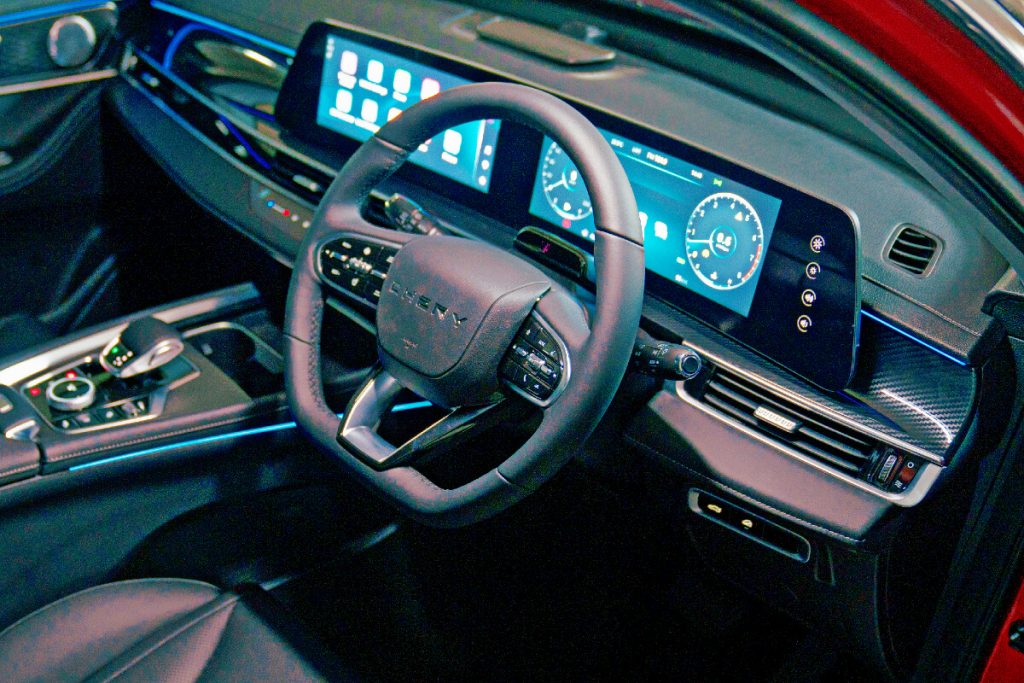
seniordriver comments
We’re a little tired of car companies who consider themselves so self-important that they need to capitalise their own brand, or the models (yes, MINI, PEUGEOT, we’re looking at you). Chery also sees a need to capitalise TIGGO, for no apparent reason. Other than here, we have downgraded it to upper and lower case.
There’s no doubt that Chery will sell a lot of Tiggos in Australia. In our time with the car, it garnered a lot of interest and many compliments, but that was from people seeing it, not driving it. Strengthening the sales case are five-star safety ratings, a seven-year warranty and very sharp pricing.
We drove the Tiggo 7 Pro Urban, the entry level model, but you wouldn’t have known it was the base model. The Urban and Ultimate get a few additional features that most people could happily live without, although the all-wheel drive in the Ultimate may sway some buyers.
Frustratingly, we were unable to find any details about braked towing capacity or turning circle. We’ve put a question into Chery to see if we can get answers (They have since told us that the Tiggo 7 Pro is not rated for towing in Australia, which may be an issue for some buyers. And they’re looking into the turning circle and will come back to us if they can confirm it). Another frustration was a key fob with no way of attaching it to a key ring.
Chery advises that all Tiggos come equipped with a full-size steel spare wheel. However, when we looked, it certainly appeared to be an alloy spare wheel. It may have been an aberation, but we’ll check. (Chery confirmed that the spare is, despite reports elsewhere, a full-size alloy wheel – well done, Chery!)
Chris reported fuel consumption of 8.8L/100km, but explained that this was only achieved after an economy-boosting run down the motorway. He suggests a figure of 9.6 is more likely. We, on the other hand, managed 7.9L/100km without specifically driving for economy. In either case (other than Chris’ 6.5 motorway figure) this is once again a long way short of the claimed fuel consumption figure of 7.0L/100km (front-wheel drive models). And remember: the Tiggo requires premium unleaded.
Like many Chinese vehicles, the cruise control in the Tiggo was extremely poor. In fact, we’d go so far as to say we’ve never experienced worse. It snatched and grabbed, applied the brakes at the oddest times and generally misbehaved all the time. We would suggest that fuel consumption in cruise control mode would be even worse than usual. Like many Chinese cars, the cruise control also slowed the car whenever the steering wheel deviated from the straight ahead position, frustrating and confusing following motorists. Applying the accelerator to try and regain the set speed introduced a worrying hesitation before the car responded to the accelerator message.
Quality and fit were variable. The interior rear-view mirror surround felt like it would come off in your hand as you tried to adjust it, and the map loading repeatedly failed, requiring numerous attempts. The air conditioning was feeble, at best. Selecting Sport mode made no discernible difference to performance or handling.
And none of these things will have any effect whatsoever on demand. The Tiggo 7 Pro will sell as fast as Chery can supply them.
